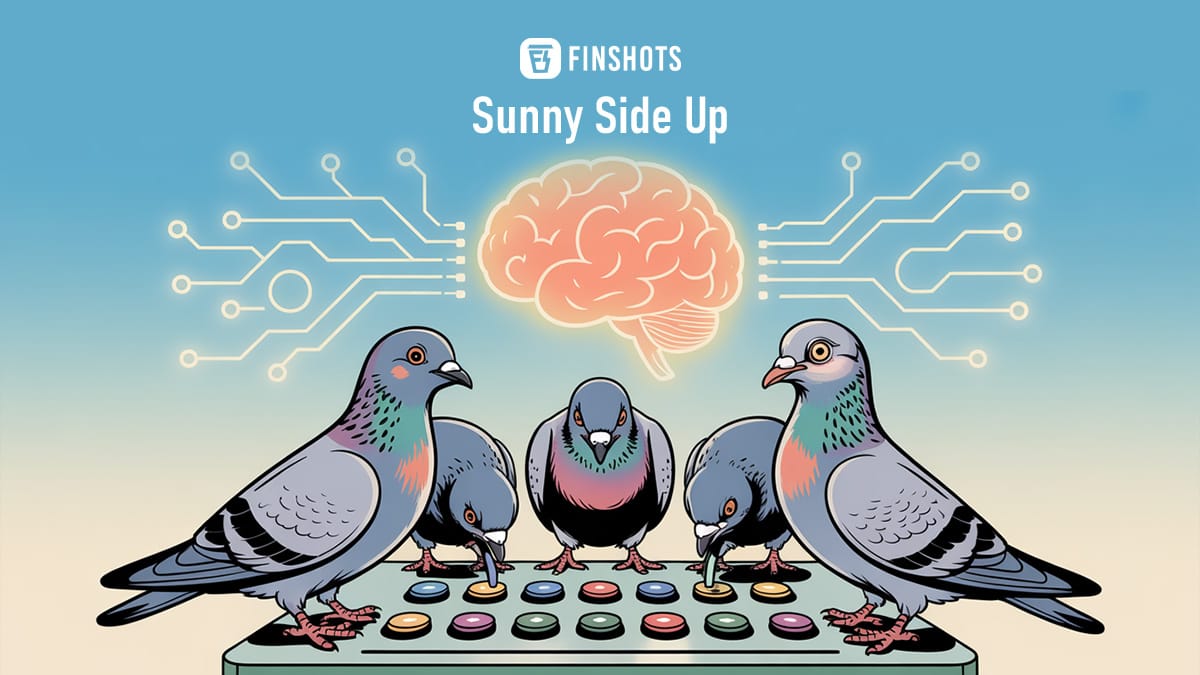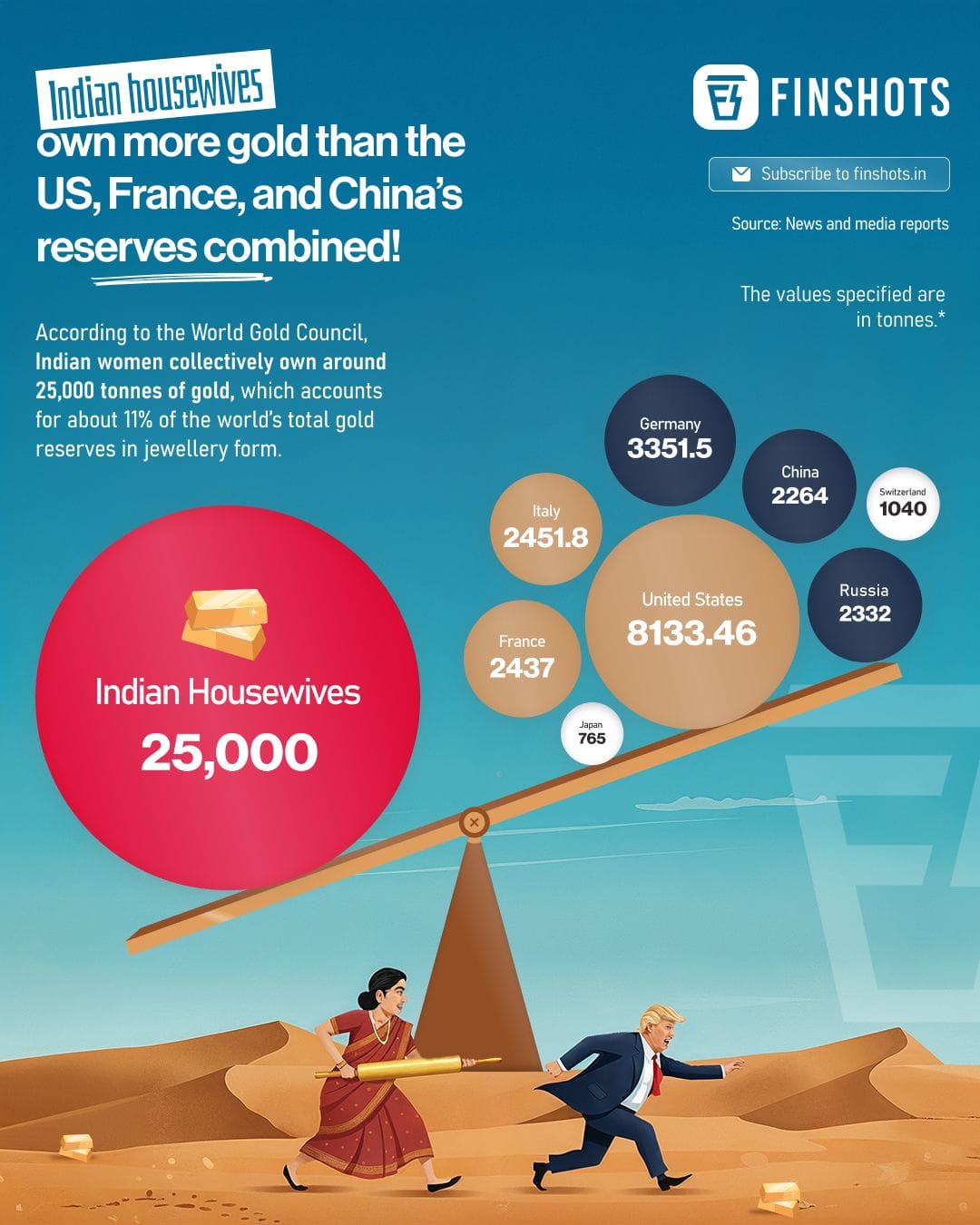Lying mirrors, pigeons & AI, and more…

Hey folks!
Imagine you’re in a Uniqlo trial room. The mirror tells you the shirt fits like a dream. You buy it, but at home? You have the same shirt, same you… but you look less dashing. Like the magic’s gone.
That’s exactly what shoppers in China accused Uniqlo of recently. Social media posts under #UniqloMirror claimed that the brand’s trial room mirrors slimmed waists, softened complexions, even changed how colors looked. Uniqlo denied it, insisting their mirrors are plain vanilla glass.
We obviously don’t know who’s right here. But here’s the thing. Stores and brands don’t need fancy tech to shape how you see yourself. Lighting, angles, muted backdrops… every detail is often engineered to make you like what you see. And once you like what you see, you buy. That’s impulse shopping in action. The emotional brain shouts “yes” long before your rational brain can whisper “maybe later”.
And brands have always thrived on these nudges. Think of how most lean on urgency: “Only last few left!” Or how a colour suddenly becomes the colour of the year (2025’s is Mocha Mousse, in case you’re wondering). Even brand names are psychology hacks. Like how Lululemon’s founder once admitted he chose the company’s name because it was harder for Japanese consumers to pronounce the letter ‘L’, making it feel exotic.
These tricks prey on the same human quirk. That we’re not nearly as rational as we think after all. And impulse purchases aren’t a failure of willpower. They’re more about environments built to exploit those weaknesses.
So maybe the real “lying mirror” isn’t in Uniqlo’s showroom at all. Maybe it’s in our heads, reflecting the version of ourselves that shops on instinct. And in an era where every store and every screen is nudging us to do so, a good hack is catching yourself in the act (maybe in front of a mirror itself! :))
It’s super hard to skip these, we know. But it’s also a nice way forward, yeah? To sometimes outsmart your own psychology before it empties your wallet.
Here’s a soundtrack to put you in the mood 🎵
This world is a strange place by The Kush Upadhyay Group
What caught our eye this week 👀
AI is all thanks to Pigeons?!
If you think pigeons are just winged freeloaders squatting on your balcony, think again. Because these birds might have given us the blueprint for artificial intelligence.
Yeah, no kidding!
Back in the 1950s, a psychologist named B.F. Skinner put pigeons in boxes and trained them with food pellets. If they pecked the right button, they got a reward. But peck the wrong one and they go hungry. And through this simple system of trial and error, pigeons soon learned to perform surprisingly complex tasks.
Sidebar: At one point, Skinner even pitched a plan to the US military to use pigeons to guide missiles. And while that sounds nuts, the birds were surprisingly accurate.
By the 1990s, scientists noticed something stranger. Pigeons could recognize patterns humans often failed at. Show them a set of photos, and they’d sort trees, or tell a Monet from a Picasso. Because they were brilliant at one thing: relentless learning. Keep pecking, keep failing, keep adjusting. Over and over.
Fast forward to today. In a new study, researchers flashed pigeons abstract visuals like lines, rings, odd shapes. At first, they guessed, hitting about half accuracy. But after enough tries, they improved. On easier tasks, they reached 95%. Even on near-impossible ones, they still got better.
Now, here’s where the AI connection comes in. The study shows how pigeons’ learning style is nearly identical to how machine learning works. Both pigeons and AI rely on associative learning (linking “this stimulus means that response”) and error correction (“wrong choice? adjust and try again”). There’s no big rulebook, no human-like reasoning. Just repetition until the system gets it right.
And this is exactly where humans actually perform badly. We get stuck trying to invent neat rules like “all verticals go left, horizontals go right.” And when no rule fits, we get frustrated and quit after the overthinking lag. Pigeons, however, don’t bother with rules. They just brute-force their way through, mistake after mistake, until they crack it.
The researchers even built a simple AI model using the same method — associative learning plus error correction. And its learning curve looked just like the pigeons’. In other words, what we celebrate as cutting-edge intelligence is, as its core, bird brain logic.
And if you think that’s the end of their tech story, just remember Nikola Tesla, the man who gave us alternating current and wireless dreams, adored pigeons. He spent hours feeding them, claimed they inspired his thinking, and once said that when his favorite white pigeon died, something went out of his life.
So maybe it’s time we give pigeons more credit. The next time one struts past you at a tea stall, don’t dismiss it as a flying rat. You might just be looking at the original neural network, cooing away in plain sight :)
Infographic 📊

Readers Recommend 🗒️
This week, our reader Shahzad, recommends reading Investment Biker by Jim Rogers.
He says,
It’s a wonderful travelogue by the famous commodities trader Jim Rogers. I first read it during my MBA days in 2008, and I was really hooked on the insights I got from his real-world adventures. It’s a very good read for anyone who loves to travel, understand different cultures, and explore the economies of those countries.
Thanks for the rec, Shahzad!
That’s it from us this week. We’ll see you next Sunday!
Until then, send us your book, music, business movies, documentaries or podcast recommendations. We’ll feature them in the newsletter! Also, don’t forget to tell us what you thought of today's edition. Just hit reply to this email (or if you’re reading this on the web, drop us a message at morning@finshots.in).
🖖🏽
Don’t forget to share this edition on WhatsApp, LinkedIn and X.
